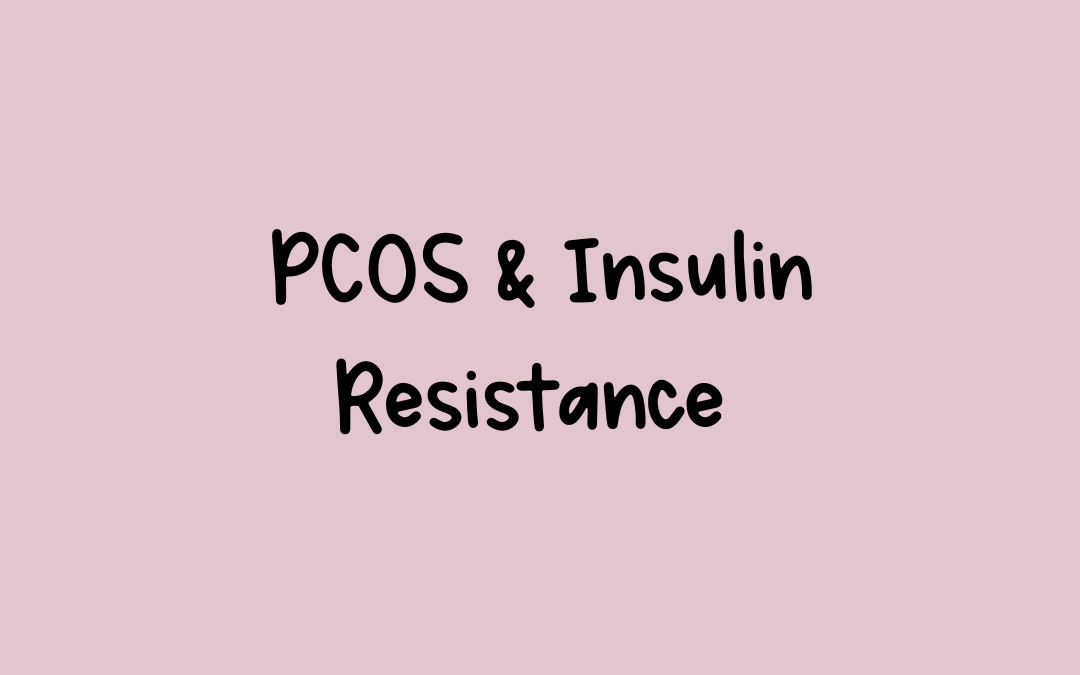
by AmyPlano | Mar 20, 2023 | General information about PCOS, PCOS and metabolism, Weight Loss
A common symptom and driver of Polycystic Ovarian Syndrome (PCOS) is insulin resistance or the inability of your body to effectively use the hormone insulin.
Did you know that up to 80% of women with PCOS deal with insulin resistance (IR)?
While it is not part of the diagnostic criteria for PCOS, the two are frequently associated with one another. If IR is not treated properly, it can lead to further hormonal and metabolic problems. Which for obvious reasons, you want to avoid!
In today’s article, I will be breaking down the connection between PCOS and IR. This includes what insulin resistance is, how it relates to PCOS, and my best tips for improving IR as a PCOS dietitian. Keep reading to learn more!
Are you pre-diagnosis and wondering if you have PCOS? Head over to this page on my website to learn more information about what PCOS is and how it is diagnosed.
What is Insulin?
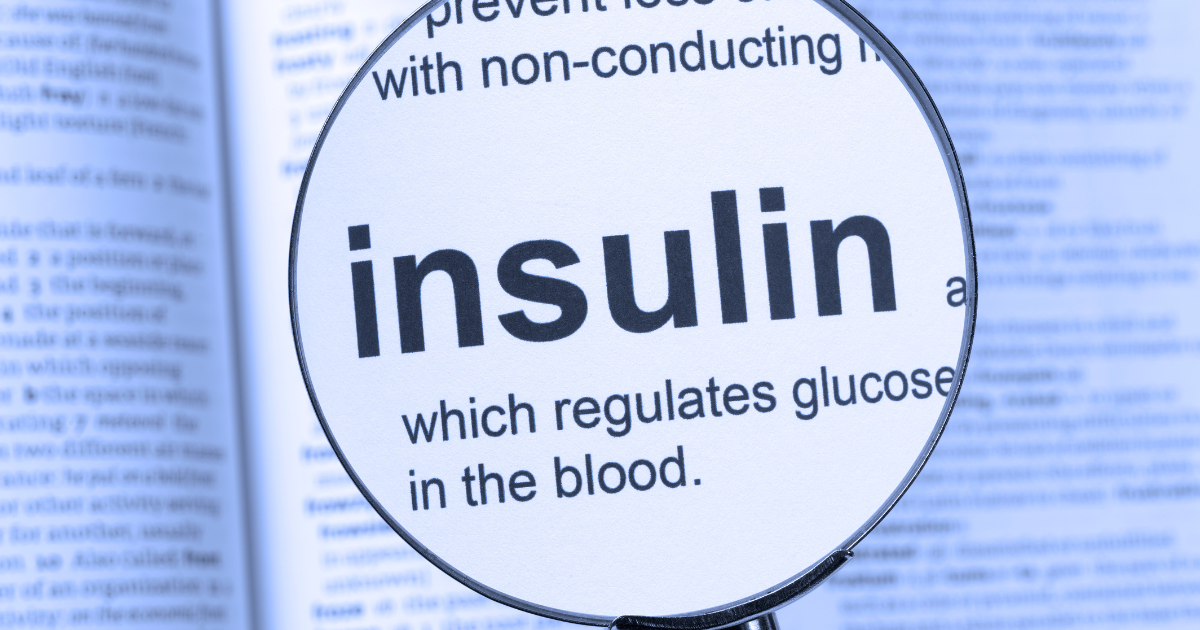
Insulin resistance involves a naturally occurring hormone inside your body called insulin. Insulin is produced in your pancreas and regulates the amount of glucose, or sugar, in your blood.
How it works (in simple terms):
- When you eat food, it gets broken down into sugar and enters your bloodstream
- Your pancreas is signaled to release insulin
- Insulin works hard to help the sugar get used as energy in your cells or signals the liver to store the sugar to use later
- This lowers the amount of glucose in your blood
However, the process only works this way when your body is functioning how it should. People living with certain conditions, such as diabetes, develop the inability to produce and utilize insulin correctly.
What is Insulin Resistance?
Now that you’ve learned about insulin, let’s dive into what insulin resistance is. Insulin resistance is when your cells stop responding to insulin properly.
Imagine your pancreas is pumping out insulin in response to all of the sugar in your blood. After a while, your cells become sensitive or resistant to this insulin and aren’t able to use it in the right way anymore.
Typically your poor pancreas will react by making even more insulin until it can’t keep up any longer. As a result, your blood sugar levels stay high and can start to harm your body.
Symptoms of Insulin Resistance
So, how do you know if you are insulin resistant?
Typical signs and symptoms of insulin resistance to look out for in women with PCOS:
- Increased or frequent urination
- Excessive hunger or thirst
- Feeling tired all the time
- Feeling hungry after you eat
- Acanthosis nigricans (dark pigmentation and thickening of the skin)
- Elevated inflammatory markers and lipid levels
- High fasting blood sugar and insulin levels
- And more!
Gaining weight and difficulty losing weight are also associated with insulin resistance in women. However, it is important to note that signs and symptoms may be different for everyone.
IR is typically diagnosed using lab work that tests for fasting glucose and insulin levels, as well as the HOMA-IR index (a scale used to assess how your body uses insulin).
How are PCOS and Insulin Resistance Related?
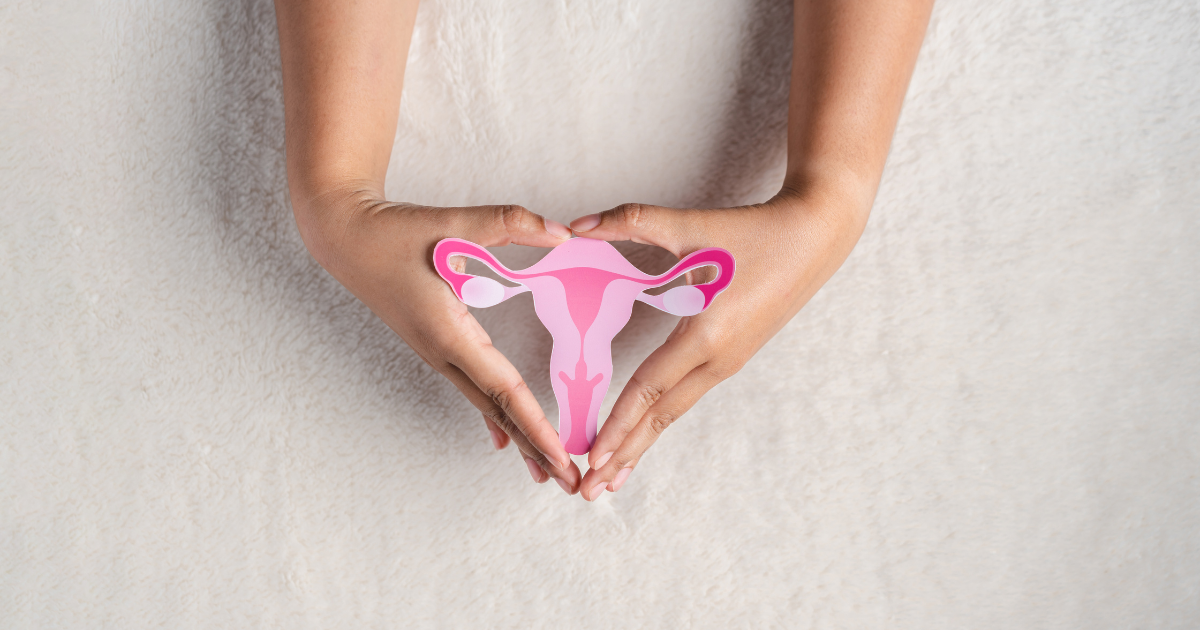
Many people associate PCOS with a hormonal disorder involving the ovaries and ovulation, but it is also a metabolic disorder that has an impact on your whole body.
We are continuing to find out more and more about the connection between PCOS and insulin resistance. Many researchers believe that insulin levels are linked to PCOS because lots of women with PCOS have too much insulin inside their bodies.
Insulin resistance is not only a symptom of PCOS but can actually drive the condition and make it worse. Having high insulin levels in the blood is associated with an increase in androgen (male sex) hormones such as testosterone. We know that women with PCOS already have elevated levels of androgen hormones, so this is not ideal.
In the reverse direction, androgen levels can also increase insulin levels. Many women with PCOS find themselves in a vicious cycle because as one rises, the other follows along. Symptoms start to worsen and quality of life can absolutely decrease!
How are IR and Weight Gain Related?
I mentioned that IR can lead to weight gain- but why is this? When insulin levels are elevated, it causes you to store fat very easily. Insulin can also stimulate appetite and make you more hungry. As your insulin levels increase, you may find that you are craving more sugary and carb-rich foods.
Because of these factors, studies show that women with PCOS and IR are more likely to gain weight and have trouble keeping it off. They also have an increased risk for type 2 diabetes, obesity, and other metabolic complications.
If you have PCOS and struggle to lose weight, working on your insulin resistance is a great step towards reaching your weight loss goals.
Tips for Improving Insulin Resistance
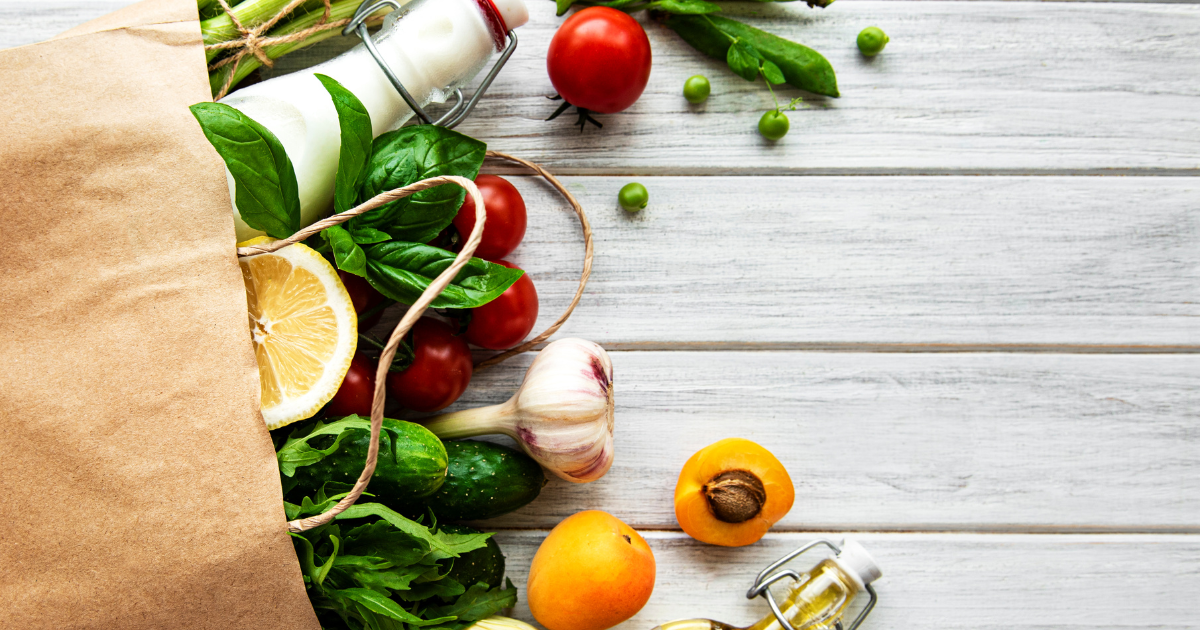
Nutrition and lifestyle changes are the best way to improve insulin resistance. Lots of research is emerging on how with physical activity and the right eating patterns, insulin resistance can be repaired.
My best tips for addressing and improving IR:
- Focus on an overall nutrient-dense, balanced diet and a regular exercise routine that is sustainable for you and your lifestyle.
- You do not need to cut out all carbs! Instead, prioritize whole-grain and high-fiber carbohydrate options when possible.
- Examples include quinoa, whole wheat, brown rice, legumes, fruits, and vegetables
- Additionally, pair your carbohydrates with lean protein and healthy fats to create a balanced meal.
- Maintain a healthy weight and get regular bloodwork done to check glucose and insulin levels.
- Eat regular meals at regular intervals throughout the day and try to avoid skipping meals for periods time.
- Address any nutrient deficiencies that may contribute to IR such as vitamin D, vitamin B12, and omega-3s. Include whole food sources of these nutrients in your daily diet.
- Manage your stress levels and make sure you are getting good quality sleep at night.
Some women with PCOS may benefit from insulin-reducing drugs such as Metformin or Actos. It is important to consult with your healthcare team about what treatment options are right for you!
PCOS and Insulin Resistance: The Takeaway
If you are a woman with PCOS, it is likely that you are insulin resistant to some extent and could benefit from reducing insulin levels in your body.
Many signs and symptoms become tolerable after improving IR. Yes, there’s hope! You can use the tips I outlined above as a great starting point for addressing this underlying issue.
Looking for additional guidance and support with nutrition and PCOS? I know this all can be overwhelming at first, but don’t worry, I got you! You do not need to go another day being frustrated over your PCOS symptoms.
I am a specialized PCOS weight loss dietitian and am here to help. Head over to my services page to learn more about my personalized programs that are tailored to your individual needs. It is time to lose weight, get healthy AF, and feel fabulous along the way.
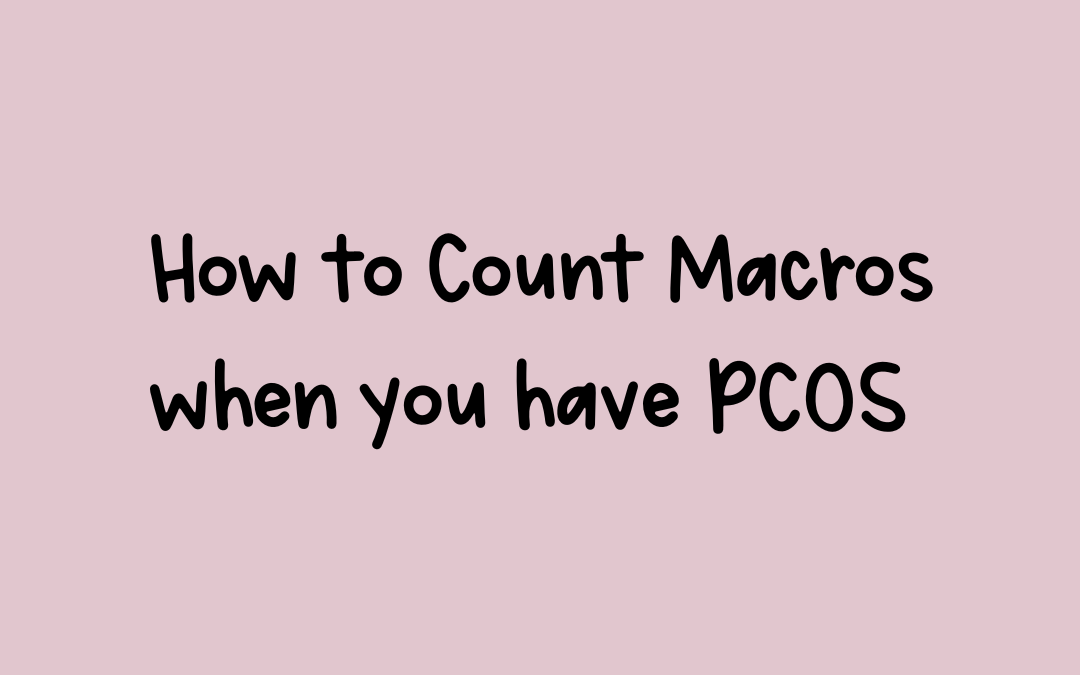
by AmyPlano | Jul 23, 2019 | PCOS and carbohydrates, PCOS and Fats, Uncategorized, Weight Loss
How to Count your Macros when you have PCOS
Learning how to count your macros when you have PCOS is a hot topic! But, before I walk you through how to do this – I need to explain what the heck macros are in the first place. Macros or more properly known as macronutrients represent the amount of the three nutrients: carbohydrates, protein and fat you need to consume to reach to achieve your dietary goals. These values are expressed in grams and are all based on the amount of calories you consume daily.
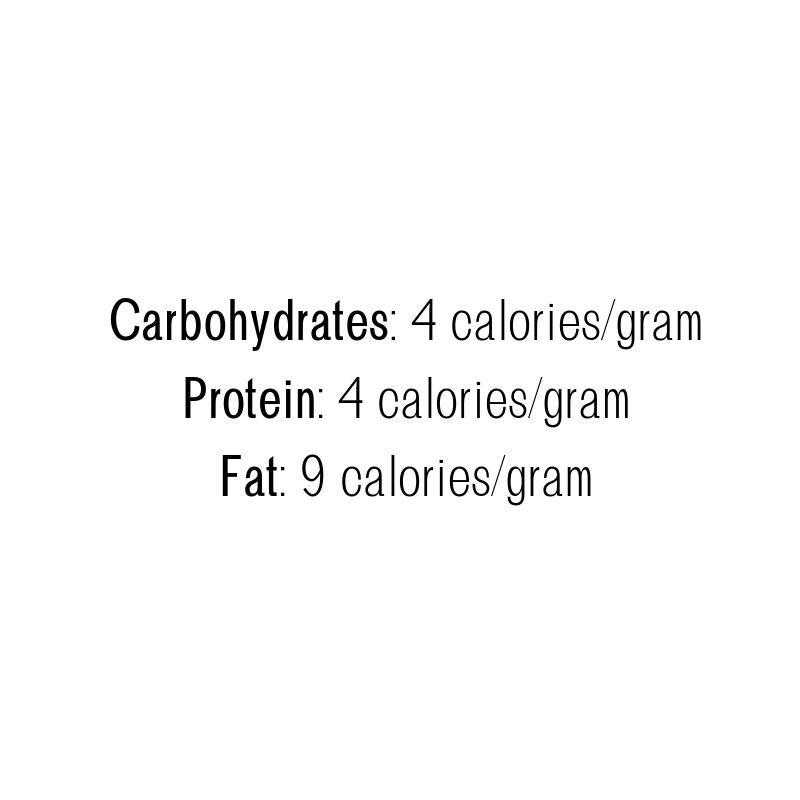
In order to determine our macros when you have PCOS, you need to know how many calories you should be consuming. In addition, you need to know the percentage of each macronutrient you should be consuming daily. The PCOS Dietitian suggests the following breakdown:

So, basically when someone tells you they are, “Counting their macros,” this simply means they are counting and tracking the amount of carbohydrates, protein and fat they take in each day.
Calories
Before we determine how to count your macros when you have PCOS we need to talk a bit about calories. While everyone with PCOS has different dietary goals, most women are seeking weight loss. Therefore, for the premise of this blog, we are going to base the calories and macros on the short-term goal of weight loss.
However, as you can imagine determining your calories for weight loss when you have PCOS is not a simple process. Your calorie needs are just as unique as you are! Your calories for weight loss depend on many variables including your: age, gender, height, weight, body fat, physical activity level, type of job and even your sleep patterns. Therefore, I would highly recommend meeting with a Registered Dietitian who specializes in PCOS to either have your metabolism tested or just to obtain some guidance on how to determine your personalized calorie needs.
In order to illustrate how to count your macros when you have PCOS, we are going to use a calorie amount of 1,400 calories per day. This would likely be a good starting point for a 25 year old female who is 5 feet 4 inches, weighs 180 pounds, is around 30 percent body fat, works out 3 times per week doing cardio 30 minutes per session, has a sedentary desk job and gets around 5 to 6 hours per night of uninterrupted sleep. Once again, your needs will likely be different, but I am using 1400 calories to provide a concrete example of how to determine your macros.
Carbohydrates and PCOS
Not surprisingly, the majority of food we eat is typically made up of carbohydrates? Carbohydrates provide energy for the body. The two main types of carbohydrates – are simple carbs (SC) and complex carbs (CC). SC occur naturally in the foods we eat. They are foods like yogurt and milk products, fruit and honey. SC are also added to food when it is processed. Examples of foods with added SC include soft drinks, cookies, ice cream, most granola bars and candy. Conversely, CC are considered more nutrient dense as they contain more fiber, vitamins and mineral than SC. Complex carbohydrates include foods made from whole grains like rice and pasta as well as legumes (beans, lentils and peas) and starchy vegetables like corn and winter squash.
In our bodies SC break down very quickly. They enter the bloodstream almost immediately causing a spike in blood sugar. This in turn prompts a rapid increase in insulin. Consequently, eating too many SC can exacerbate the symptoms of PCOS by worsening IR and facilitating weight gain.
Conversely, complex carbohydrates can improve insulin resistance as they slowly release glucose allowing for optimal insulin regulation. Due to their slow absorption rate, CC promotes an increased sense of fullness and satiety. That is why I encourage the majority of your be complex carbohydrates.
How to Determine your Carbohydrates Macros when you have PCOS
When you have PCOS, I generally recommend keeping carbohydrates under 40 percent of your total calories. This would mean if you were following a 1,400 calorie diet, you would should be consuming 140 grams of carbohydrates or less per day.
How did I get to that number? Let’s take a look at my math.

Protein and PCOS
Protein is essential. It is pretty much required for every single structure and action in the body. Everything from your hair, nails, skins and bones to your ligaments, hormones and enzymes are composed of protein.
Protein is derived from animal foods like meat, poultry, pork, fish, seafood, eggs and dairy. Plant based proteins include legumes, nuts and soy.
Protein takes longer than carbohydrates to digest and confers a sense of satiety. Also, generally protein by itself doesn’t require much insulin to be processed. This is because protein is not converted to glucose. Hence, protein does not raise insulin like carbohydrates. That is why I often recommend including a small amount of protein with your meals and snacks. This helps stabilize blood sugar and improves your overall insulin response.
How to Determine your Protein Macros when you have PCOS
When you have PCOS, I generally recommend keeping carbohydrates at around 30 percent of your total calories. This would mean if you were following a 1,400 calorie diet, you would should be consuming around 105 grams of protein per day.
How did I get to that number? Let’s take a look at my math.
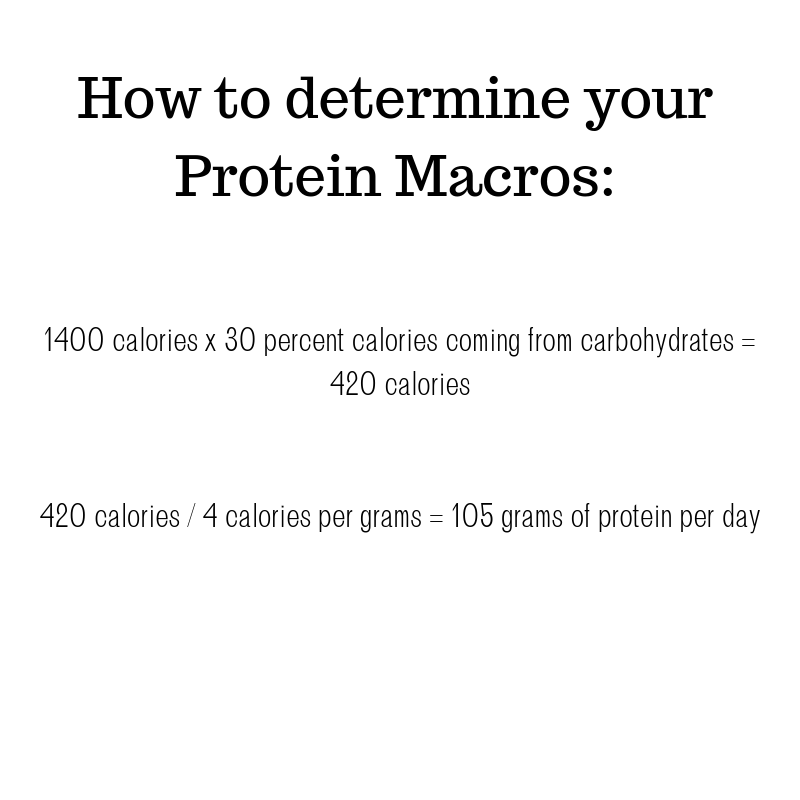 Fat and PCOS
Fat and PCOS
You might be wondering exactly where fat fits into a healthy lifestyle for PCOS. Despite its demonization, fat is an important part of our diet. Fat supports and cushions our internal organs, helps to regulate body temperature, and allows for proper absorption of several vitamins. Fat also provides the building blocks for many of our sex hormones. Fats are found in a variety of food from butter and oils to dairy products, meats and processed foods.
The right types of fats when carefully consumed can help improve insulin levels. Like protein, dietary fat alone doesn’t require insulin because it doesn’t breakdown into glucose. It also helps keep us satisfied longer thereby reducing overeating. Fat also has the unique ability to provide an increased palatability and mouth feel carbohydrates and fat don’t.
However, in spite of its many awesome insulin-lowering qualities you can’t eat as much fat as want. In fact, diets high in certain types of fats can actually contribute to IR, heart disease, hypertension and certain types of cancers.
How to Determine your Fat Macros when you have PCOS
When you have PCOS, I generally recommend keeping fat at around 30 percent of your total calories. This would mean if you were following a 1,400 calorie diet, you would should be consuming 47 grams of fat per day.
How did I get to that number? Let’s take a look at my math.
 Conclusion
Conclusion
Everybody and their mother is counting macros these days and you can too! All you need to know is how many calories per day you need to consume to meet your dietary goals. Then you simply apply the percentages 40, 30 and 30 respectively for carbohydrates, protein and fat. Lastly, you divide these values by each nutrient’s calorie value to arrive at your macronutrient amount in grams. Therefore, using the example noted above for someone following a 1,400 calorie diet their macros would be as follows:

Diet is critical in effectively managing PCOS. The foods we consume have a significant impact on our hormones. Balancing your hormones is critical to having an optimal metabolism. Since it is obvious that the underlying cause of PCOS is hormonal imbalance, it is not surprising that diet can impact the symptoms and metabolic consequences of PCOS. Determining your macros when you have PCOS isn’t difficult it just takes a little math! Macro patterns like the ones discussed in this article that support lower insulin levels should be an integral part of healthy diet for PCOS.
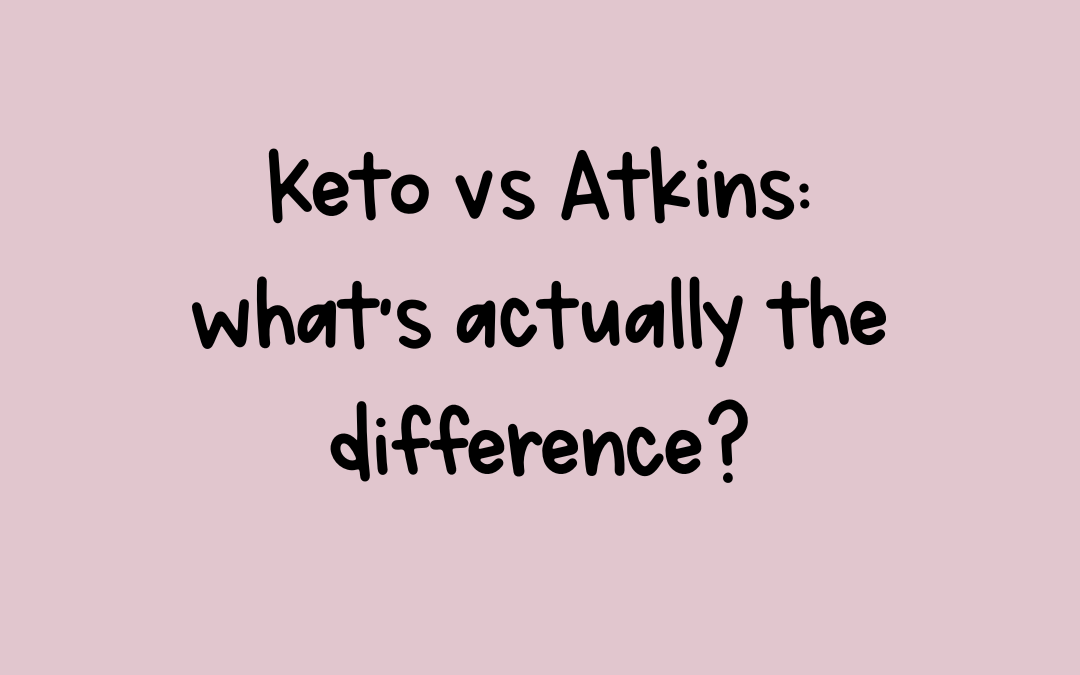
by AmyPlano | Jul 16, 2019 | General information about PCOS, PCOS and carbohydrates
Keto vs Atkins: what’s actually the difference?
Keto is such a hot topic these days but is it the same thing as Atkins? Both are low carb, high in fat and share a large majority of the same principles but there are differences. We are going to get to the bottom of this mystery once and for all.
The Great Debate: Carbohydrates Versus Fat
Few things in the world of nutrition are debated as much as “carbohydrates vs fat.” For decades we’ve been told fat is detrimental to our health. Meanwhile low-fat “diet” products, often full of sugar (and crap!) flood just about every aisle in the supermarket. Meanwhile, our population is fatter, sicker and on more medications than ever.

To eat carbs or not to eat carbs. That is the age-old question.
Therefore, it is no surprise that over the last few decades, low carbohydrate diets have made a resurgence. Also thankfully the pendulum has finally swung in a promising direction as it relates to fat intake. Many health professionals now support that a low carb diet is a viable option to treat obesity and other chronic, Western diseases.
Yay finally for legit science!
However, despite advances in research, there still seems to be confusion among the various low carb diets. In fact, one of the common statements I hear in my practice from patients is that they are following a ketogenic diet. But are they really?
More often that not – upon a quick review of their actual eating patterns it becomes apparent their eating style is more consistent with an Atkins diet rather than of a strict ketogenic diet. But does it really matter? Aren’t all low carb diets created equal and illicit the same results? The answer as you will see is not that simple.
Where do I Come in With All of This ?
It is important to note the goal of this blog is purely informational. As a practitioner I have no personal bias as it relates to a low carbohydrate diet. I am neither for or against them. I meet my patients in their health journey ‘where they are’.
With that being said, it is important that my patients are properly educated and not misinformed. Therefore, the intention of this blog is not to debate whether or not a low carb diet is healthy. The intention is to instead to address the differences and similarities of two of the most popular low carbohydrate diets: The Atkins Diet and the Ketogenic diet (aka just Keto). Both are low carb and share a large majority of principles and beneficial outcomes, but a few subtle differences exist too. But what are the main difference between these two diets? And do these differences really matter? Does one promote more long term health benefits? Let’s get some answers.
Similarities Between Atkins & Keto
Before we examine what makes both diets unique it is critical to address the similarities between Keto and Atkins. I believe it these striking similarities that often have someone thinking they are following one type of low carb diet; when in fact they are following a different approach.
Both are Low Carb Diets
At the most basic levels, both Atkins and Keto are low carb diets. However, surprisingly there is no standard definition of what actually constitutes the term “low carb”. Both Keto and Atkins respectively present and adhere to their own definitions. As you will see, it is these very definitions that set Keto and Atkins apart from one another.
Both are Built on the Premise of Ketosis
Definitions aside, it is fair to make the general assumption that a low carb diet restricts carbohydrates, such as those found in sugary foods, pasta, fruit and bread. For both diets, their success centers around lowering the body’s carbohydrate intake in an effort to lower insulin and consequently burn fat as fuel. This process is known as ketosis.
In the absence of carbohydrates the body produces ketones. Ketones are an alternative fuel source for the body to use when blood sugar (glucose) is in short supply. The goal of both Keto and Atkins is to tap into the body’s fat burning potential. Once this switch is flipped, the body changes from burning carbohydrates to fat.

Therefore, by restricting carbohydrates, insulin levels decrease, and fat burning increases dramatically. As we will see in this blog, ketosis plays a pivotal role in each of the diets but in different ways, thus affecting how sustainable each diet is in the long run.
Both Diets Place an Emphasis on Dietary Fat
High fats foods such a meat, eggs, full fat dairy and liberal amounts of fats form the backbone of both Atkins and Keto. However, Keto greatly favors calories come from fat. While on Atkins, fat receives less of an emphasis, with a more dramatic shift towards higher protein lower carb consumption.
Both Diets Provide Similar Health Benefits
Weight loss is the primary end goal of Atkins. While Keto was developed in the 1920’s as a treatment option for epilepsy. But recent research suggests the Keto and Atkins diets may provide health benefits including by not limited to weight loss, optimized blood sugar, improved insulin sensitivity, even reduced risks of various cancers and some neurodegenerative diseases (1, 2).
The Keto Diet
Keto by definition is a high fat, moderate protein, very low carbohydrate diet. The dietary approach is linear from start to “finish”. There is no maintenance plan once you reach your goal. Instead, you sustain the same fixed eating patterns indefinitely.
The Specifics of a Ketogenic Diet
♥ 5 – 10% of energy from carbs
♥ 20 – 30% of energy from proteins
♥ 65 – 80% of energy from fats
The primary goal of eating in tune with these specific percentages is to get the body in ketosis. By following this high fat, moderate protein, low carb diet the individual is able to significantly lower their insulin levels. This radical shift in fuels prompts the body from burning from glucose to creating and using ketones. In turn, facilitating fat burning.

Keto is a high fat, moderate protein,low carb diet.
Let’s be clear about something. Keto is a high fat diet. Not a high protein diet. So you don’t need/want huge amounts of protein. Protein in excess of what your body uses/needs can be converted to glucose, making it more challenging to get in (and stay!) in ketosis. Most people who think they are following Keto often fail to recognize this piece. They get confused with Atkins where protein intake is unregulated and encouraged. They think the same applies for Keto. Well, it does not. On Keto, protein intake needs to be determined and adhered to in order to maximize results.
Long Term Compliance on Keto
When following a true Keto diet, long term compliance with these specific guidelines is critical. If the guidelines are violated, the benefits of ketosis will not be actualized and the individual may actually end up gaining weight.
Therefore, in embarking on Keto the individual must make (and sustain!) significant, permanent, lifestyle changes. No compromising. No backing away. Just a full lifestyle adjustment regarding how you view food and nutrition. No biggie, right ?
Why You Need to Know your Baseline Calorie Needs on Keto
I know counting calories is often noted as not necessary on Keto. However, I am going to disagree here. Think about it. Keto relies on very specific percentages based on total calories consumed. While I agree due metabolic adaptations in relation to hormone regulation you can likely consume a higher level of calories – you still need a starting point for calories. If you do not establish a baseline level of calories, it is impossible to determine the actual percentages of fat, protein and carbohydrates you need to consume. Therefore, you need a starting point for calories to base your percentages off of. Makes sense, right?
The Atkins Diet
Now let’s transition to the Atkins diet and what makes it is this approach unique.
The Specifics of the Atkins Diet
The are four phases in the Atkins diet: Induction, Balancing, Fine-Tuning and Maintenance. The first phase is the most restrictive and vaguely resembles the overall platforms of a ketogenic diet with one major caveat; there is no restriction on protein just carbohydrates. As time progresses and the individual gets closer to their goal weight complex carbohydrate intake increases and the diet becomes less carbohydrate restrictive.
The 4 Phases of Atkins
Induction: Carbohydrates are restricted to no more than 20 grams per day. Emphasis is placed on high fat and high protein foods, with the source of carbohydrates coming from dark, leafy greens.
Balancing: Nuts are incorporated, low carbohydrate vegetables and small amounts of fruit.
Fine-tuning: As someone approaches their goal weight, they begin to add more carbohydrates slowing down weight loss.
Maintenance: High fiber carbohydrates are significantly increased and based on an individual’s level of “tolerance” more or less or added.
The Basics of Atkins
Fat: No defined amount although liberal consumption of high fat foods are encouraged
Protein: Also no defined amount although liberal consumption of high protein foods are encouraged
Carbohydrates: < 20 net grams of carbohydrates per day during Induction phase with increasing amount through the 4 phases
There are no restrictions on fat consumption. More importantly, there is no restriction on protein. You are encouraged to eat as much protein and fat as long as you keep your carbohydrates where they need to be in each respective phase. You don’t need to ‘hit’ specific percentages for your macronutrients. Additionally, you can eat as many calories as you like. Therefore, depending upon your personal eating style this can become a high calorie, high fat, high protein, low carbohydrate diet.
How Keto and Atkins are Different
So we have addressed both the similarities and the respective differences of Keto and Atkins. Now let’s talk about how they compare. Here is a summary of the keys points.

Differing Factor
|
Atkins
|
Keto
|
Carbohydrate Levels
|
Changes from phase to phase, starting with drastic reductions followed by gradual reintroduction.
|
Relatively Fixed level: Approximately 5-10% of total calories.
|
Carbohydrate Monitoring Method
|
Net carbohydrates
|
Total carbohydrates
|
Protein Intake
|
No limit
|
Often based pm approximately 1-1.5 grams of protein for each kg of bodyweight.
|
Fat Intake
|
No set amount – high fat foods encouraged
|
High fat intake. As much as 65 – 85% total calories.
|
Progression
|
4 phase process where carbs are slashed then gradually reintroduced.
|
Once nutritional ketosis is achieved optimal carb, fat and protein levels remain unchanged.
|
Ketone Production
|
Ketosis highest during phase 1. After that ketosis is decreased as carbs are slowly reintroduced.
|
Optimal production levels maintained throughout course of diet.
|
Time When Individual Achieves Ketosis
|
With ketosis the Atkins diet looks to achieve it in phase 1.
|
Depends on the individual.
|
Distribution of Macronutrients
Perhaps the most significant difference between Keto and Atkins is how the macronutrients are specifically distributed. Macronutrients (aka ‘Macros’) are the amount of carbohydrates, fat and protein someone should consume based on their specific needs. Keto as you have seen is highly specific with finite macronutrient ratios. While Atkins promotes a level of food quality (high fat, high protein, low carb) but makes no mention of actual quantity.
Carbohydrates
There is no denying the fact both diets are low in carbohydrates. However, long term Keto promotes a consistent lower carbohydrate diet. Generally speaking, most people on Keto keep their carbs below 30 – 50 grams for.ever. Yes, as already noted, there are no phases or progression of carbohydrates for Keto. Just one steadfast, unwavering level of uniform carbohydrate intake.
In the Induction phase, carbs on Atkins are set at 20 grams or under. However, as the individual progresses through the various phases additional carbohydrates are added. While these additional carbohydrates are not ‘junk’ carbs – the body still recognizes them with a similar blood sugar response. Additional carbohydrates promote an increase in blood sugar. This rise in blood sugar drives up insulin. Ultimately, knocking the individual out of ketosis.
Which raises the question: “Is Atkins a ketogenic diet?” The answer would be: “No.”
Atkins unfortunately diet does not turn you into a fat burner for the long haul. This is simply because as you progress you are allowed to eat an upward of 100 grams of carbs per day. This amount (for many) is sufficient for your body to keep burning sugar for fuel – not fat. Keto, on the other hand, requires sticking to 30 – 50 grams of carbs per day increasing the likelihood of long term ketosis.
Are All Carbs Created Equal?
One area of carb counting that can get a little confusing is the whole “net” carbohydrate situation. Atkins utilizes a net approach to counting carbohydrates. While Keto counts total carbohydrates. Don’t worry, though — it’s not nearly as confusing as it sounds.
Net carbohydrates are what you’re left with after subtracting the grams of fiber per serving from the total carbohydrate amount per serving. In this approach, you can also subtract sugar alcohols as well such as xylitol, sorbitol and erythritol.
For example, if an item has 30 grams of carbohydrates and it contains 10 grams of fiber, then the amount of net carbs the item contains is 20 grams.
According the creators of Atkins, the method to the madness is the net carb amount reflects the grams of carbohydrate that significantly impact blood sugar level. This follows the assumption there is little to no impact of both fiber and sugar alcohols on blood sugar. Therefore, when following Atkins these are are the only carbs you need to count. Foods that are low in net carbs such as nutrient-dense vegetables and low glycemic fruits such as berries don’t cause a significant impact on blood sugar and therefore are less likely to interfere with weight loss.
Matter of perspective
When it comes to counting carbs on Keto it really depends who you ask! Some true devotees of Keto will count total carbohydrates independent of fiber. While others followers of Keto aim for 20-25 grams of net carbs OR ~ 50 grams of total carbs. Either way you slice it the goal is to keep carbohydrates low enough to decrease insulin levels and facilitate fat burning.
Fat
The Dietary Guidelines set forth by the U.S. government promote a diet containing 20-35 % of total calories coming from fat. Therefore, comparatively Keto is considered a very high fat diet with 65 – 85 % total calories coming from fat. Atkins is also higher in fat than your typical recommended diet. But not as high as Keto. The emphasis is slightly different with Atkins. The focus to is instead on removing carbs while equally boosting protein and fats.
Also unlike Keto, there is no set amount of daily fat you are required to consume on Atkins. The main emphasis on Atkins is to keep carbohydrates below the set level for each phase. While high fat foods are encouraged, fat intake can vary from person to person.
Protein
On Keto an ‘adequate’ or ‘moderate’ amount of protein is encouraged. While on Atkins protein intake (like fat intake) has no set amount. Therefore, it is possible for Atkins to become a low carbohydrate, high protein, high fat diet. Why does this matter?
Certain factors like eating too much protein can (for some individuals) get in the way of ketosis and increase the need for gluconeogenesis. Gluconeogenesis is just a fancy term for making glucose from non-glucose sources like protein and fat. It’s a process when your body converts excess protein or dietary fat you eat into blood sugar for energy. Some researchers believe the protein sources commonly consumed on a low carb diet have the propensity to raise insulin levels. In response to an increase in insulin levels, ketogenesis is down regulated.
This is why eating ‘too’ much protein can impair some individual’s ability to get in and stay in ketosis. But, this does not mean you should restrict your protein consumption either! But what it does mean is someone following Keto NEEDs to determine their adequate level of protein intake. A good general rule of thumb is to aim for 1.0 – 1.5 grams of protein per kg body (3). To convert your weight into kg simply multiply your weight in pounds by 0.45.

By taking the time to determine what a moderate level of protein intake looks like, the individual on Keto can both optimize their fat burning potential and prevent lean muscle breakdown. However, your protein needs are dependent on your activity level, weight, height, gender, body composition, stress and inflammation levels in your body, etc. So keep in mind this calculation is a very basic way to determine adequate protein intake. If you are a competitive athlete you will likely need to adjust this value.
Comparative Summary
In summary, it is fair to say when it comes to Keto and Atkins, Keto is much more specific with very finite guidelines. While Atkins can be seen as more ‘loosey-goosey.’ In order to achieve the benefits of Keto you have to be very precise. While the Atkins diet is more flexible. Hence Atkins could be seen as less intimidating prompting more people to try their hand at this approach. With that being said, some people thrive on a rule-based approach. They need profound structure because otherwise they’re going try to break/bend the rules at any occasion they see fit. So, it really comes down to the individual.
Which One is Better?
In all honesty, despite their similarities and differences I really don’t know which one is ‘better’ per say. My personal stance is “Different strokes, for different folks.” My goal is to meet my patients where they are and guide them based on the scientific evidence that exists. I personally think an argument could be made for pretty much any dietary approach out there. SO I guess it really lies in someone’s goals, level of dedication, persona and long term personal outlook on health and wellness.
Some people just can’t wrap their arms around a low carb, high fat diet. It is SO foreign to them. While others, embrace this dietary approach with unwavering optimism. I think the big thing with either diet is knowing the score. Based on my knowledge, the intention of Keto is more of a true lifestyle change. While Atkins seems for most to be a fairly short-term guide to weight loss. So if you are as they say, ”In it to win it,” I would recommend you go ‘all in’ with Keto and do it right.

But truth be told – I have never.ever.ever. met anyone to be consistent long-term with either approach. Inevitably for most — pizza happens 🙂 But maybe that is just the circle of patients, friends and family members I run with?
Well, I guess that is not true. Research supports long term compliance (> 12 months) on a very low carb diet in the general population is fairly low (4, 5). Surprised? I didn’t think so. Does that mean this approach is wrong? No. It just means a very low carbohydrate diet is very hard to sustain.
My Personal Experience is All I Have GOT!
Also I can only speak from my personal clinical experience. But once people go back to eating normal- carbs and all – they seem to gain weight back with interest. That is because each gram of carbohydrates pulls into 3-6 grams of water into the body. When you significantly decrease your intake of the carbohydrates – you simply take on less water. Increasing protein intake can also have a diuretic effect on the body. Therefore, it is not a surprising when a person goes off a low carb diet – they often experience shifts in fluids and therefore fluctuations in weight.
So I guess the next question becomes can we get the benefits of a ketogenic diet without being going gangbusters with Keto or Atkins? The answer is YES. If there is any uniform message here the key to success is managing insulin. And ‘Hello!” there are numerous ways to that! Last we I talked your ear off about Intermittent Fasting. But you don’t have to go Keto or even engage in Intermittent Fasting if that is not your bag. In fact, the number one insulin sensitizer is exercise!!! Plus, exercise has a host of other extremely beneficial side effects beyond just lowering and managing insulin. So why not start with the lowest hanging fruit? No need to complicate matters anymore than they already are 🙂
One more thing
And one more thing. What gets measured gets managed. Really want to knock it out of the ball park? Start tracking every morsel that goes in your mouth. And I do mean everything! Because before you even begin thinking about changing your dietary approach you need to understand the current status of your diet. The only way to do that is track what you eat and review the data. Plain and simple.
Need help getting started? Why not enlist the help of one of fabulous Plano Program’s Registered Dietitians? They can not only help you determine the most effective food tracking platform – but they can provide an overall assessment of both the quality and quantity (Hello macros!) of your diet. The best part? They are likely covered by your health insurance. So why not take advantage of the awesome opportunity to have someone help you determine what to eat? Make an appointment now by clicking here.
Phew. That was a mouthful! I hope you found the information helpful. If anything I hope it empowers you to select the most appropriate dietary approach when it comes to low carbohydrate diets.
Hugs & High Fives,
Amy
P.S. What have been your personal experiences with low carb diets? Do you find one type of low carb diet was easier to sustain than the other? After reading this were you following one type of low carb diet – when you really were following another type? Please share your experience in the comments below.
References
- Halton TL, Willett WC, Liu S, et al. “Low-carbohydrate-diet score and the risk of coronary heart disease in women.” N Engl J Med. 2006;355:1991-2002.
- Halton TL, Liu S, Manson JE, Hu FB. “Low-carbohydrate-diet score and risk of type 2 diabetes in women. “ Am J Clin Nutr. 2008;87:339-46.
- American College of Sports Medicine position stand. “Nutrition and athletic performance. American Dietetic Association., Dietitians of Canada.,” American College of Sports Medicine., Rodriguez NR, Di Marco NM, Langley S.Med Sci Sports Exerc. 2009 Mar; 41(3):709-31.
- Hu T., Yao L., Reynolds K., Niu T., Li S., Whelton P. K., He J., Steffen L. M., and Bazzano L. A. (2016) Adherence to low‐carbohydrate and low‐fat diets in relation to weight loss and cardiovascular risk factors. Obesity Science & Practice, 2: 24–31.
- Grant D Brinkworth, Manny Noakes, Jonathan D Buckley, Jennifer B Keogh, Peter M Clifton; Long-term effects of a very-low-carbohydrate weight loss diet compared with an isocaloric low-fat diet after 12 mo, The American Journal of Clinical Nutrition, Volume 90, Issue 1, 1 July 2009, 23–32.

by AmyPlano | Jul 9, 2019 | PCOS and carbohydrates, Uncategorized
J.E.R.F.
Today’s nutrition tip is brought to you by the acronym J.E.R.F. – Just Eat Real Food. There are a million ways to spin off of this word (and the relative term real) but the direction I am going to is with ‘pseudo’ foods. Bare with me … I promise you don’t need to eat cauliflower to feel the love.
Last week I posted this silly quote on social media:

And while it definitely made my chuckle – it also made me realize just how many foods we come across on a day-day basis are foods that have turned into things they really are not:
-
- Cauliflower pizza
- Cauliflower tots
- Cauliflower rice
- Mashed cauliflower
- Noodles made from zucchini, carrots, butternut squash
- Coconut ice cream
- Riced broccoli
- Impossible burgers– non-meat burgers that ‘bleed’ beet juice
- You get my point here 🙂
Cauliflower pizza IS NOT pizza.
And truth be told most versions don’t even remotely come close to the real deal pizza. In all honesty, most cauliflower pizza is not EVEN that much healthier. The crust is generally made with cheese, eggs and more cheese. I have nothing against cheese or eggs– but when you spec it out most can clock in just as high in calories as regular pizza depending on the toppings.
I love zoodles every. once. in and a while.
Of course they are a vegetable high in fiber, nutrients and vitamins and minerals. But what is wrong with having real pasta every once and a while? Yes – I know the carbs. But say you really love pasta why not just have the real deal occasionally in small amounts?
Riced broccoli — first of all have you tried it? It tastes just like broccoli! But are you surprised. Likely not because it IS broccoli.
Anything vegan trying to resemble meat – my only question is a big fat WHY?
Why not just eat real meat if that is the flavor, texture profile you are going for. I can only get away with saying that because I was a vegetarian for 10 years, a vegan for 2 years and a raw vegan for 1 year. I also used to have long dread locks and lived in Costa Rica – so go figure! Now I eat meat – love it – and often I am embarrassed to tell you that I used to eat something called “tuno.” No that is not an expensive Italian tuna in a high grade olive oil. Tuno was a ‘fake’ vegetarian based “tuna” that came in a can and smelled like tuna. Wicked gross.
Bottom Line
My point here is don’t eat foods because you feel like you have to. If you love riced broccoli then … rock on with your bad self! But don’t feel like you have to love it and convince yourself it tastes like rice. Because it certainly doesn’t! Also remember – you don’t have to be anyone or anything you don’t want to be. So why should your food be any different?
You don’t have to eat cauliflower pizza and ‘pretend’ it is delicious. Why not just head down to Modern Pizza once a month and tear it up? (When you do might I suggest the Veggie Bomb with hot cherry peppers!)
Furthermore, you don’t have to kill yourself and do a Whole-30 and deprive yourself of dairy when you love cheese. What are you going to do after you the 30 days? Will you never. ever. ever. return to eating your favorite food group? Survey says – I think not my friend! So why torture yourself and take something out of your diet you love. We have to be realistic with our food choices. If not then behavior change becomes unsustainable and we crash and burn every single time.
You see pizza, tater tots, rice and pasta are NOT the enemy. It is the way we abuse these foods and our relationship with them that makes them unhealthy.
Love yourself enough to eat the real deal
Do you think eating pizza or cheese for that matter will completely derail all your hard work? Hardly. Eating them every day – highly likely! But occasionally eating the foods you love — you know the ones that puts a smile on your face — should be part of your lifestyle These foods are not something you should try to replace. Because you and I both know there is absolutely no replacement for great REAL high quality food.
See part of the cool thing about the food we put into our bodies is that for many of us it is one the few things in life we can control. So why not make a pack to yourself that you are no longer going to eat something just because you feel like you should. You are no longer going to feel bad because you just don’t love spaghetti squash. Instead you are going to have a small serving of the real deal with some awesome sauce and homemade meatballs and call a night. You are not going to feel bad. You are not going to feel like you failed. Instead, you are going to be proud that you made a conscious decision to eat real food that made your little heart sing.
I wanted to leave you with some parting words ♥

by AmyPlano | Jul 5, 2019 | General information about PCOS, PCOS and College
I hope you are having an all-star start to your week. Coming off the weekend is alway tough. However, there is no day better than Monday to get back on track. It is time to shake off the Monday blues and bring your focus back to healthy eating. Your first stop – the grocery shop. Today I am here to provide you with my three absolute BEST tips to grocery shopping like the champ you are. Put down that grocery store hater-ade and grab yourself a cart. Things are about to get fun!

Grab a cart and get your shop on 🙂
I ♥ to grocery shop
Grocery shopping is pretty much one of my favorite past times. I guess you could even call it a hobby of some sort! Anyone who knows me – knows I love grocery stores. No matter where in the world I might be I am constantly on the look out for grocery stores so I can check out the latest and greatest food finds.
However, with that being said shopping aimlessly is never a good thing. BAD things happen in grocery stores for Amy Plano when she does not have a plan. And I can only imagine the same goes for many of you! Please tell me I am not alone?
So today I am going to rattle off some of my top ticks for staying on track with your diet at the grocery store. I know none of these are new concepts to you. However, if you are like me, I can ALWAYS benefit from gentle reminders on how to improve my behavior.
Game plan it on Friday
I have a rule for myself on Friday afternoons. I cannot leave until I have written down at least two things I am cooking for dinner for the up and coming week. For the other meals I fill in the blanks with leftovers or go-to meals. Easy ones like baked chicken thighs or flank steak on the grill rounding out with some Trader Joe’s frozen veggies. However, I must have two concrete (not made up in my head as I have a tendency to do!) meals that I commit to making before I walk out the door. No ifs, ands or buts about it. That way when I go to the grocery store I am exciting about what I am buying.
I generally just pull up my Pinterest board called “Dinner” (yes – super original) and see what looks interesting and is hopefully in season. Here is the link for my dinner board in case you need some inspiration. Once I have identified the recipes I jot down the ingredients I will need in my spiral plain Jane notebook. This when I go home I know what I need and can compare it against what foods I already have.
A typical entry might look like this:
Monday: Baked chicken thighs, Trader Joe’s frozen sweet potatoes & broccoli
Tuesday: Egg Roll in a Bowl
Wednesday: Sushi
Thursday: Crock Pot Chicken Chili
Friday: Low Carb Chicken Quesadillas with cabbage lime slaw
Saturday: Out
Sunday: Flank Steak, Baked Potatoes and Salad
It is important to note these dinner recipes do not need to be fancy! Nor does your weekly ‘meal plan’ need to be elaborate. People get wrapped up in the semantics. They say to themselves I don’t know what to make that is healthy. Come on. You know what is healthy and what is not. You do not need me to tell you day-day what you should eat. These meals should be something everyone enjoys and resembles something relatively healthy. Depending upon your family the term relatively healthy likely means different things. But don’t sweat the small things.
Just write it down – the very act of writing things down help sets you up to succeed. Plan to succeed right from the start.

I know you have heard this quote a zillion times – but the message never gets old.
By planning ahead on Friday you will save yourself a ton of stress, time and money at the grocery store. It really puts YOU in the driver seat rather than leaving your meals to chance. So many of my patients do awesome all day with healthy eating. But then dinner rolls around and nothing is planned – so they reach for what is most convenient but not always healthy. They then beat themselves up. By coming up with a plan before the fact this can easily be avoided.
Because you and I both know when we go to the grocery store with no meals planned – food goes to waste and we come home with food but no meals = no bueno 🙁 It’s like having a closet full of awesome clothes – but no perfect “outfits”. We aint’ got time for that!
Make a list and stick with it
DO NOT step foot in any grocery store without a list. Okay – I admit I am the worst at this. However, we all need to raise the bar and follow through with grocery list making. Maybe I should start a self-help group for this? Honestly. I don’t care if you need to scribble the list down on a receipt you find in your purse. You MUST have a shopping list BEFORE you step foot in that grocery store.

Just write it down – the very act of writing things down sets you up to succeed
Shopping with a list is so critical. Not only does it save money because you are only buying exactly what you need – it also saves you from buying less than stellar foods that were not on your list. By making a list and sticking to it you can get in and out of the grocery store without cruising down every aisle wondering, “Do I need these delicious bourbon pickles from Traders?” – nope not on the list. Move on sista’!
The Type A person in me likes to arrange my list on how the store is set up. The list often starts with vegetables, then fruit, next protein and ultimately the dairy aisle. That way I don’t need to back track. Also the crazy dietitian in me likes to play a game when I grocery shop. I like to see if I can only manage to shop the perimeter of the grocery store. As it is really in the aisles that most people get into trouble with processed foods. Sometimes I am successful – sometimes not. However, I do make a point to spend more time out of the aisles if possible. But sometimes those Ghost Pepper Potato Chips do call my name in aisle 3.
Never ever shop hungry
I know this one is really a no brainer – but nothing good ever comes of going to the grocery store hungry. I don’t care what you eat – whether it be a meal or a snack – but dear friend please have something! If not everything looks good. You end up buying things that you would have never have even contemplated putting in your cart. If you go astray – always try to J.E.R.F. If you do that – then the damage might not be too bad.

And guess what? If it ends up in your cart – it ends up in your house. And if it is in your house — you will likely eat it 🙂
So why not avoid this nonsense all together? Keep healthy snacks in your car. Some suggestions include single serving packs of almonds, RX bars, single serving packet of trail mix, small bags of popcorn, and my personal favorite beef jerky.
Well my friends that is hopefully motivation on this Monday to get your butt in gear. Happy grocery shopping and hope to see you at Traders, Shop Rite, Whole Foods, Aldi’s or Costco or any other grocery store in between.
Need help navigating the jungle that we call the grocery store? Did you know the dietitians at The Plano Program conduct both one-one and group grocery shopping tours? Well we sure do! Email us us at amy.plano@yahoo.com to sign up.
Hugs & High Fives,





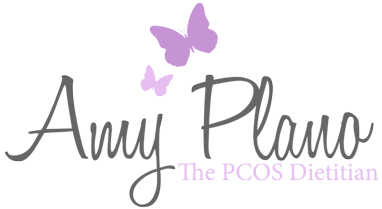




 Fat and PCOS
Fat and PCOS Conclusion
Conclusion













